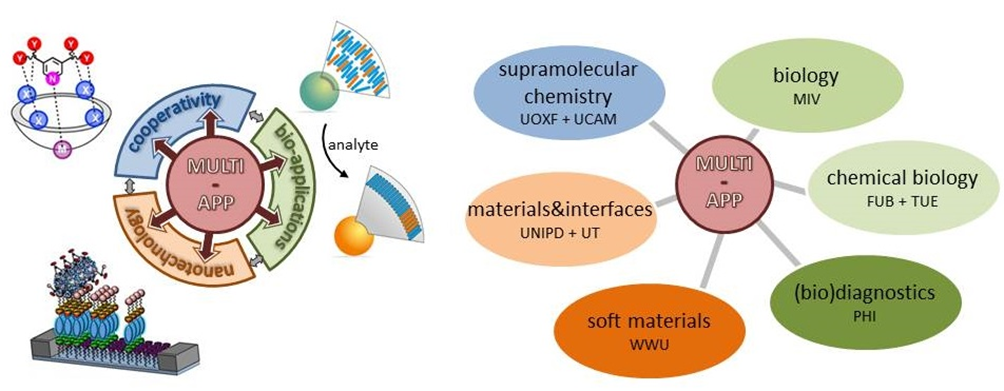
This Project has received funding from the European Union Horizon 2020 research and innovation programme under the Marie Sklodowska-Curie grant agrrement N° 642793

Multivalency is one of Nature’s governing principles for achieving strong and selective biomolecular recognition. Many biological processes rely on the cooperative effects associated with the occurrence of multivalent interactions. Consequently, there is an enormous interest in the development of chemical multivalent systems that display similar features for innovative applications in fields as various as diagnostics, drug discovery, materials science and nanotechnology.
The central theme of multivalency is used to connect partners from academia and industry with a common interest in understanding how multivalency works, but for very different scopes and using very different approaches. This network is thus perfectly positioned to train the next generation of European researchers in all multidisciplinary aspects related to multivalency. A broad training programme has been developed that comprises top-level individual research projects, both general and specific network-wide dedicated courses, secondments, personalized scientific training and a broad package of complementary skill training. The industrial partners Philips and mivenion GmbH contribute in the form of training, supervision, technical contributions, and perspectives on the commercialisation of multivalent systems.

The research programme is articulated in three work packages each of which dealing with a different application area of multivalent systems. Each work package is composed of a series of individual projects with specific objectives.
Work package 1: Fundamental understanding of cooperativity in multivalent systems 1. Understanding the origins of strong multivalent cooperativity (Oxford) 2. Cooperativity assessment in chemical systems through high throughput titration technology (Cambridge)
Work package 2: Multivalent systems for bio-applications 1. Self-assembled multivalent nanoparticles for biosensing (Eindhoven) 2. Starlike vs. hyperbranched and dendritic architectures to target inflammation (Berlin) 3. Cellular uptake of multivalent dye conjugates based on polyglycerol (Berlin)
Work package 3: Multivalent systems for nanotechnology and materials applications 1. A modular sensing system based on gold nanoparticles (Padova) 2. Multivalent surface gradients (Twente) 3. Self-assembly guided by light and magnetic field (Münster) 4. Confinement and reactivity of small molecules on nanoparticles (Padova)
Dipartimento di Scienze Chimiche - via Marzolo, 1 - 35131 Padova